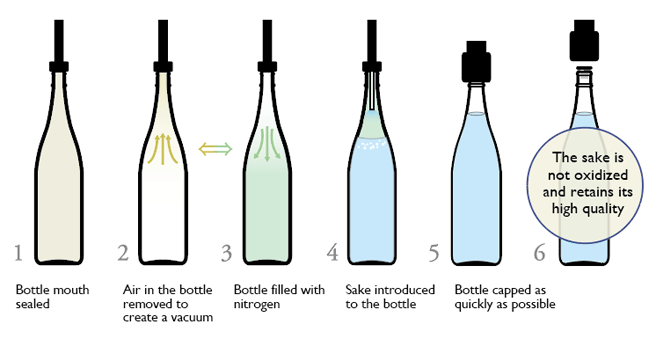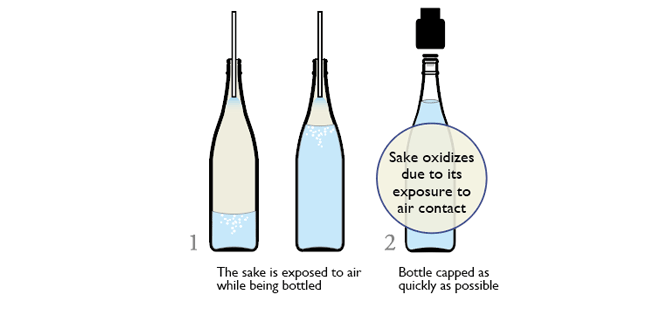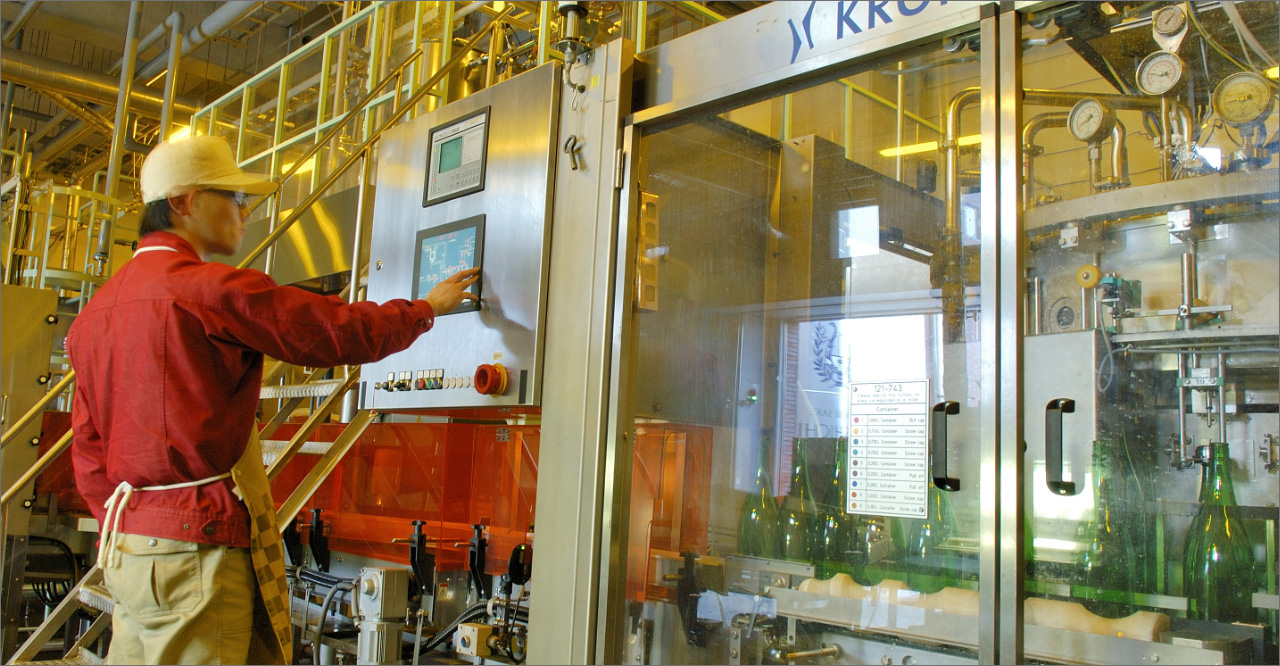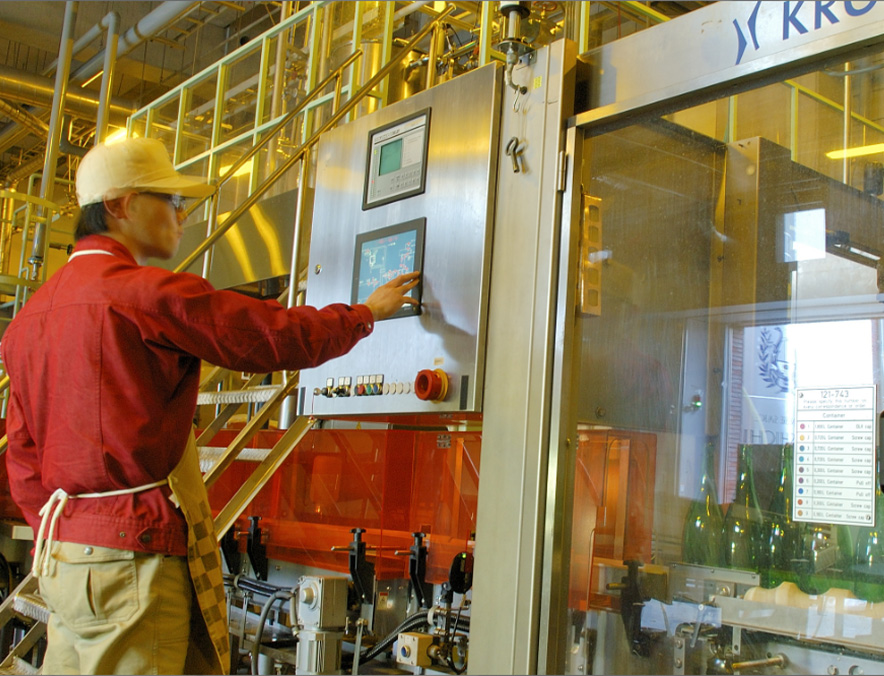Daishichi employs the first anoxic bottling system in Japan. The sake is never exposed to air during the filling process, which means that no oxidization takes place and that the sake is amazingly smooth even immediately after bottling. The absence of oxidization also means that there is no degradation over the long term.
The first anoxic bottling system in Japan
We focused on the fact that conventional bottling lines in clean rooms cannot prevent the exposure of sake to the air, resulting in oxidization and a loss of fragrance. Daishichi's solution was to create a new bottling system that eliminates all contact between sake and worker, and between sake and air. We introduced Japan’s first counter-pressure filling machine equipped with a nitrogen replacement system. Bottling takes place in anoxic, hermetically-sealed conditions. This prevents any contamination or oxidization of the sake, adding to long-term quality assurance.
- ①The filling nozzle descends
and seals the mouth of the empty bottle. - ②The air in the bottle is removed to create a vacuum.
- ③The bottle is filled with nitrogen.② and ③ are twice repeated.
- ④The sake is introduced,
forcing out the nitrogen. - ⑤The nozzle leaves the bottle mouth,
which is swiftly capped.
Japan’s first anoxic bottling line

Conventional bottling method

The effect of the anoxic
bottling line on sake quality
Previous bottling machines bottled sake at a warm temperature (due to prior pasteurization) when it is most susceptible to chemical reactions. The sake was also violently exposed to the air in the bottle. As a result the sake would become slightly oxidized during the bottling process. Abruptly-oxidized sake develops a spiky quality, and it takes weeks of rest before the original sake quality re-establishes itself. The excess oxygen that enters the sake leads to faster degradation over time. In contrast, an anoxic line where the sake is never exposed to air means no oxidization takes place and the sake is amazingly smooth even immediately after bottling. The absence of oxidization also means that there is no degradation over the long term.






